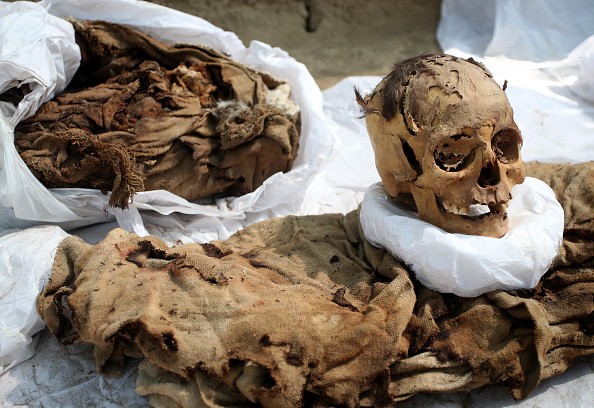Peru archaeologists discovered unwrapped four 1,000-year-old mummified children with fair hair on their skulls in one of the oldest neighborhoods in Lima, which was used as a sacred ceremonial space.
Mirella Ganoza, a researcher, believed the children were part of the Ychsma culture. The Ychsma group lived on the central coast of present-day Peru before the Inca Empire came to power.
Archaeologists Discover Unwrapped 1,000-Year-Old Mummified Children

Luis Takuda, an archaeologist leading the Huaca La Florida research project, reported that the children were found next to a 3,500-year-old adult and near a small hill with a staircase leading to a possible hidden temple.
Takuda said the three mummies were covered with a cloth, while the other two were skeletons, and their skulls still had fair hair, a long and preserved hair.
In a 2020 study published by the journal Forensic Science, Medicine, and Pathology, archaeologists in Egypt were also shocked to find mummies with fair hair instead of black or brown.
The test results found modern hair, and the researchers concluded that the hair did not lighten due to exposure to the mineral natron used during the mummification.
According to Reuters, he said that the area was a ceremonial atrium. "It was a very important ceremonial atrium where the people who lived in the time of the Ychsma considered it a sacred space and therefore buried their dead here," he said.
The four children were found near the homes of the residents in Peru and a field used by a Peruvian professional soccer team for training. Mountains and sacred sites were everywhere in Lima, with about 400 sacred sites throughout the city.
The mummies were found on a hill filled and covered with trash, and bulldozers were used to clear the waste, and the police had to move homeless people in the area.
Hector Walde, an archaeologist, said that the bulldozers had cut the mummies off, which crossed the boundaries of the huacas. Walde said that the mummies were not human sacrifices but normal burials in the sacred space.
Lima's Rich History
Lima remained one of Peru's archaeological sites, and other sacred sites were outside the city, such as in Cusco, the capital of the Inca Empire, until conquistadors infiltrated it in the 16th century.
Archaeologists believe that members of a civilization known as the Lima culture built the pyramid around 500 C.E. The group occupied the site at approximately 700 C.E., followed by the Wari culture.
Around 1000 C.E., the Ychsma culture used the site as a cemetery as Wari and Ychsma burials were discovered.
Ganoza said that she find it quite interesting that right in the heart of Miraflores, in the middle of the city, surrounded by modern buildings and constructions, a sacred site was still preserved, the Huaca Pucllana ceremonial center.
Archaeologists also discovered a 3,000-year-old mummy in Lima a few months ago. The mummy was from Manchay culture, which existed between 1500 and 1000 B.C.E.
Related Article : 3000-Year-Old Mummy Found in Rubbish Dump in Peru!








